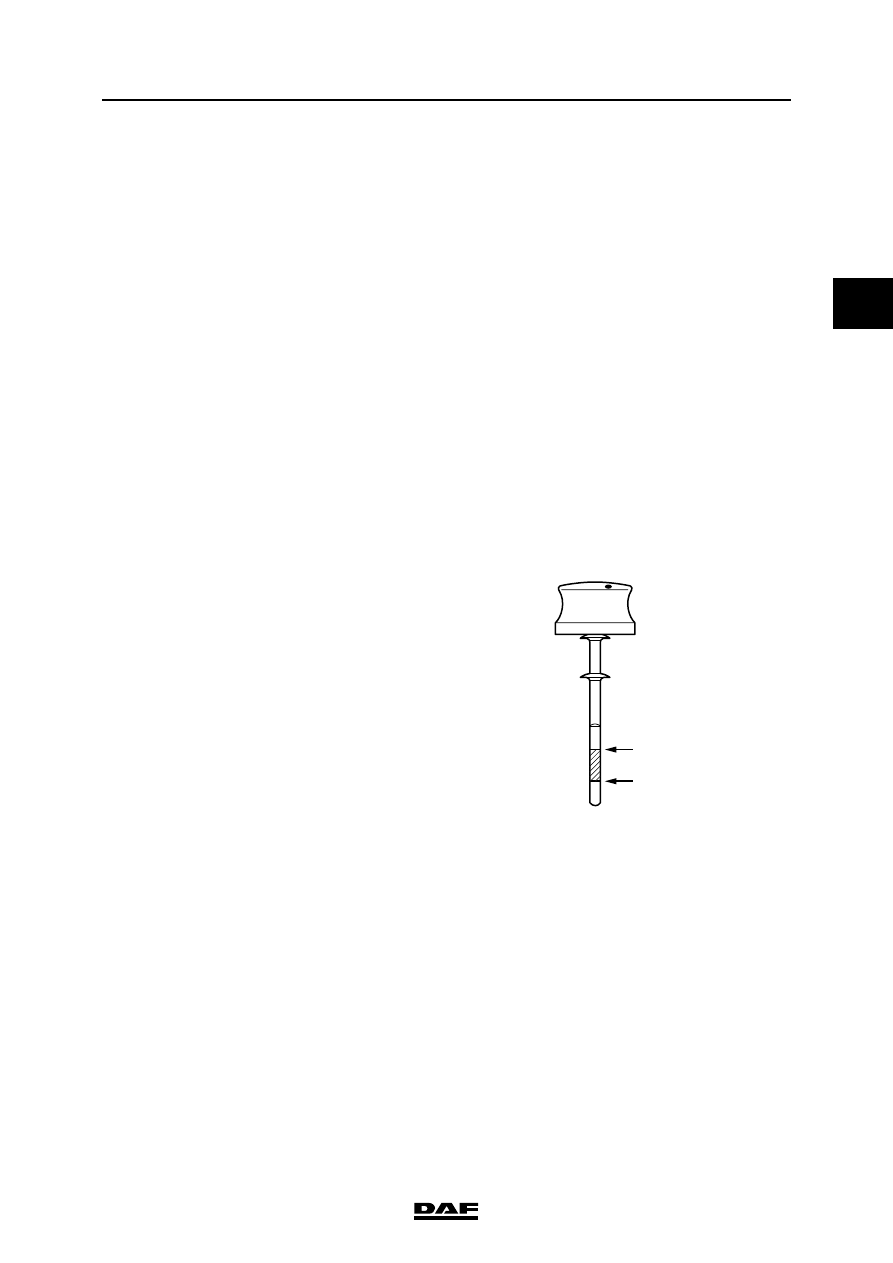DAF CF65, CF75, CF85 Series . Manual - part 956

©
200423
4-3
Draining and filling
STEERING GEAR, GENERAL
ΧΦ65/75/85 series
7
2
7.
Jack up the steerable axle(s) until the wheels
are clear of the floor.
Note:
If the wheel deflection limiting valves are
incorrectly set, e.g. because the maximum
wheel deflection is increased, these valves
should be set correct first.
8.
Start the engine and, with the engine
running, slowly turn the steering wheel
(approx. a
∂ turn of the steering wheel per
second) to the left and to the right, until the
maximum wheel deflection is reached.
Continue this until the oil level no longer
decreases.
Watch the steering oil level, especially if the
vehicle is equipped with a slave cylinder.
9.
Run the engine at idling speed for another 2
minutes. Do not touch the steering wheel
during these 2 minutes.
10. Check the steering oil level when the engine
is not running.
11. Clean the dipstick and its immediate
surroundings so that no dirt can get into the
reservoir.
12. Check the fluid level in the reservoir using
the dipstick.
13. The fluid level should be between the marks
when the steering oil is "cold".
Note:
When the steering oil is at operating temperature,
the level may be above the top mark on the
dipstick.
Note:
If the vehicle is equipped with a slave cylinder, it
may be necessary in some cases to bleed the
slave cylinder separately.
To do so, slightly loosen the union nuts of both
connections while the engine is running, and no
steering action is taking place. Any air can now
escape.
14. Put the filler cap on the reservoir again and
lower the axle(s).
15. Inspect the line connections for leaks.
16. Make a test drive. Now check the steering oil
level and check the line connections for
leaks.
S7 00 676